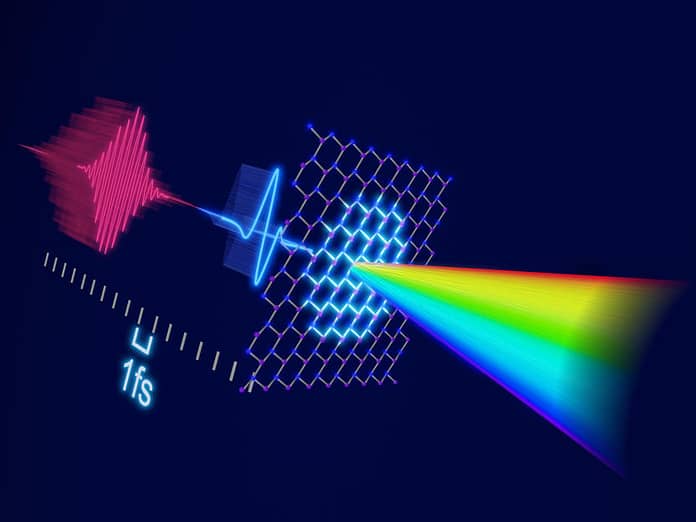Laser light can radically change the properties of solid materials, transforming them into superconducting, magnetic, or other states very quickly. Intense light causes these changes to occur in a millionth of a billionth of a second by “shaking” the atomic lattice structure of the material and moving electrons around. But what exactly is happening at this elementary level? How do atoms and electrons actually move?
A team of theorists at the Max Planck Institute for the Structure and Dynamics of Matter in Hamburg has found a new way to shed light on these atomic motions. In the journal PNAS, the researchers describe how a laser pulse produces light emission from matter at higher frequencies, known as higher harmonics. However, this high-powered light does not remain the same, but changes with every movement of the grid. Because their intensity varies, high harmonics provide “snapshots” of the motions of atoms and electrons at any given point in time.
The team studied a monolayer of hexagonal boron nitride (hBN) just one atom thick that could excite its lattice to vibrate in a few tens of femtoseconds. After a first “pump” laser pulse stimulated the collective movement of atoms in the material, a second infrared laser pulse amplifies the movement of electrons so that they emit light at new frequencies – high harmonics. These contain information about lattice vibrations (also called phonons), and thus give scientists detailed new insights into these atomic motions.
The results represent a major advance in understanding the fundamental changes in a solid material irradiated by an intense laser. This approach also outperforms its efficiency, because until now these elementary movements could only be observed with more advanced light sources.
In addition, the scientists showed that the phases of the first laser also affect the interaction between light and the hBN layer once its atoms begin to vibrate. In this way, the researchers could determine which movement in the grid was triggered by what phase in the laser’s optical cycle – as if they were starting a stopwatch at certain points in time. The team thus developed a powerful spectroscopic technology with maximum temporal resolution. Using this approach, retinal motions can be recorded with femtosecond accuracy – without the need for technically more complex high-energy X-rays or attosecond pulses.
“The most important result of this work is that it provides a basis for understanding the role that phonons play in nonlinear light-matter interactions,” says lead author Ofer Neufeld from MPSD’s Theory Department. “Using this approach, we can study femtosecond structural dynamics in solids, including phase transitions, mixed states of light matter and also the coupling between electrons and phonons.”

